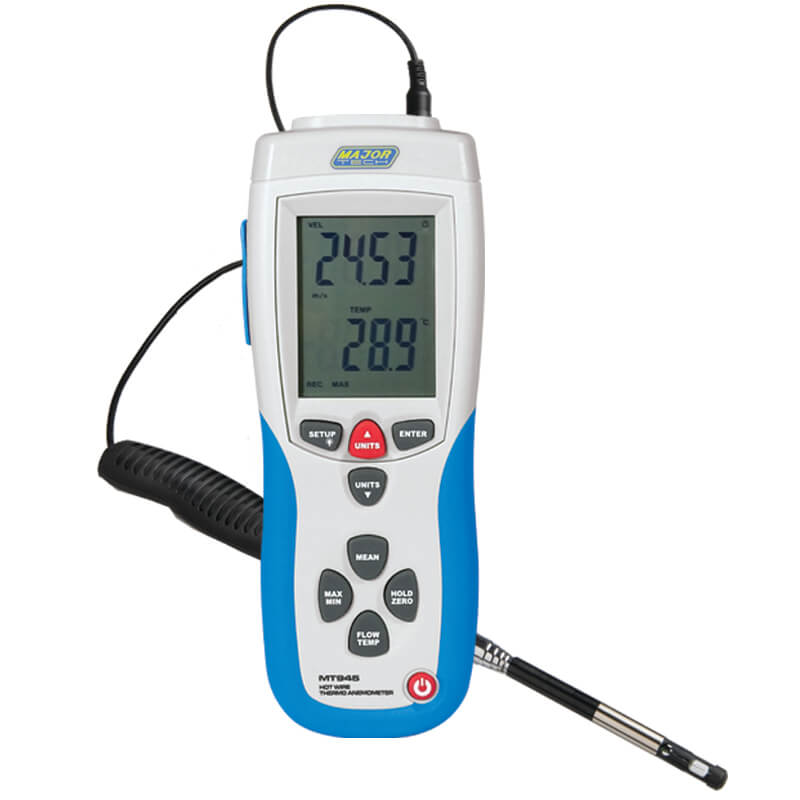How an Anemometer Can Boost Your Weather Tracking System
How an Anemometer Can Boost Your Weather Tracking System
Blog Article
All You Need to Find Out About Anemometers: Just How They Function, Why They Issue, and Where to Utilize Them
Anemometers, though usually ignored in the realm of clinical instruments, play an important role in various fields, supplying important understandings into wind rate and air movement patterns. Understanding the technicians behind these devices is vital for anybody looking for to harness the power of this information. From meteorologists tracking weather patterns to engineers creating structures with wind lots in mind, the applications of anemometers are diverse and significant. As we explore the complexities of anemometer technology, we will discover the internal operations of these devices, their value, and the essential factors to consider when choosing the appropriate anemometer for particular applications.

Anemometer Fundamentals
A vital tool utilized to measure wind rate and instructions, the anemometer plays a crucial duty in meteorology and different sectors. An anemometer typically is composed of three or four mugs that revolve in the wind, a vane that directs right into the wind, and sensors to track the turnings or movements.
There are various kinds of anemometers available, consisting of mug anemometers, vane anemometers, hot-wire anemometers, and sonic anemometers, each with its unique functions and applications. Cup anemometers are frequently used for basic wind rate dimensions, while vane anemometers are preferred for directional dimensions.
Concepts of Anemometer Procedure
Building on the fundamental understanding of anemometer fundamentals, the concepts of anemometer operation clarify the mechanics behind wind speed and instructions measurements. Anemometers operate the principle of air movement affecting a sensor, creating it to rotate. Mug anemometers, as an example, have three or more mugs that record the wind, creating them to rotate quicker as the wind rate increases. The rotation speed is then exchanged a wind speed measurement. Vane anemometers, on the various other hand, utilize a tail or a probe that aligns itself with the wind instructions, supplying a measurement of wind direction based on the positioning of the sensor. Hot-wire anemometers count on a warmed wire that cools off as wind overlooks it, with the price of cooling figuring out the wind rate. Ultrasonic anemometers action wind speed and direction by examining the time it takes for ultrasonic signals to take a trip in between transducers. Understanding investigate this site these principles is crucial for accurate and reputable wind dimensions in various applications.
Value of Anemometers
Anemometers play a vital role in determining wind rate and instructions, providing necessary information for weather condition forecasting, climate research studies, ecological tracking, and air travel operations. Meteorologists depend on anemometers to collect exact wind information, helping them comprehend climate patterns, forecast tornados, and issue prompt warnings to the public. Wind ranch operators use anemometers to assess wind problems and maximize electricity production from wind generators.
Applications Throughout Different Industries
In the sustainable energy field, anemometers play an essential function in assessing wind conditions for wind ranch placements, making sure optimal energy manufacturing. Industries like construction and mining use anemometers to monitor wind speeds, important for safety methods, specifically when functioning at heights or in open-pit mines where strong winds can present dangers. In agriculture, anemometers help farmers in handling crop splashing by offering real-time information on wind speed to prevent drift.

Picking the Right Anemometer for Your Demands
Choosing the appropriate anemometer tailored to your certain needs is important for getting accurate wind speed and direction measurements. When selecting an anemometer, consider elements such as the intended application, called for measurement variety, ecological conditions, and wanted functions. For general functions, a cup anemometer is appropriate for gauging wind rate, while a vane anemometer supplies wind direction data. Hot-wire anemometers are excellent for reduced airspeed measurements, and ultrasonic anemometers use high accuracy and sturdiness.

Conclusion
In conclusion, anemometers play an essential duty in measuring wind rate and instructions across different markets. It is important to take into consideration the importance of anemometers in order to make educated decisions when selecting the most suitable device for gauging wind conditions.
There are numerous kinds of anemometers available, consisting of mug anemometers, vane anemometers, hot-wire anemometers, and sonic anemometers, each with its Visit This Link distinct features and applications. Cup anemometers are typically made use of for fundamental wind rate dimensions, while vane anemometers are chosen for directional dimensions. Hot-wire anemometers are appropriate for low airspeeds, and sonic anemometers are excellent for high-precision measurements in research and industrial setups.Structure on the fundamental understanding of anemometer basics, the concepts of anemometer operation elucidate the mechanics behind wind rate and direction dimensions. For basic objectives, a cup anemometer is suitable for gauging wind speed, while a vane anemometer supplies wind instructions data.
Report this page